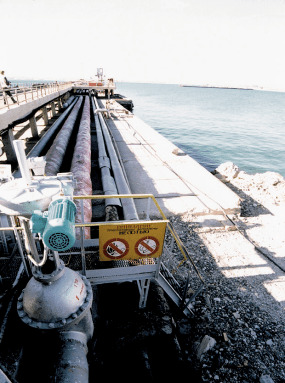Projects
The Kalamkas-Sea, Khazar, Auezov Project Advances The Kalamkas-Sea, Khazar, Auezov Project Advances

The offshore Caspian project, Kalamkas-Sea, Khazar, Auezov, agreed upon for joint implementation by KazMunayGaz and Lukoil, is expected to enter the project documentation phase in the fourth quarter of the current year, as revealed by the head of KMG, Magzum Mirzagaliyev. He noted that the procedures for forming the project operator, Kalamkas-Khazar Operating LLP, are nearing completion.
"We have reached the final stage of finalizing corporate procedures regarding the implementation of a 50% stake in Kalamkas-Khazar Operating LLP in favor of Lukoil. I am pleased to note the complete mutual understanding and absence of any contentious issues in the negotiation positions of both parties. I am confident that our collaboration will be just as fruitful during the project implementation phase," Mirzagaliyev commented at the end of August.
Failed Synergy
After the discovery in July 2000 of the unique Kashagan field in the Kazakhstani sector of the Caspian Sea, Kazakhstan authorities optimistically announced the presence of vast hydrocarbon reserves on the shelf. Immediately, 15 exploration projects were launched with investors from around the globe. Among the promising blocks were Kurmangazy, Tyub-Karagan, Atash, Satpayev, Zhambyl, and others. Some of these projects have since been shut down due to lack of prospects, while work seemingly continues on others. Nevertheless, as of today, the Kalamkas-Sea and Khazar fields are the only ones in the Kazakhstani sector of the Caspian with confirmed reserves on record.
The Kalamkas-Sea was discovered in September 2002, 150 km northwest of the Buzachi peninsula. Khazar is located 30 km southwest of it and 65 km northwest of Buzachi. In 2007, a new site named Auezov, in honor of a classic of Kazakh literature, was identified 15 km from the Khazar field. According to KazMunayGas, the combined estimated recoverable resources of these fields are around 81 million tons of oil and 22 bln tons of gas. At the end of September, the development project was approved by the Central Commission for the Exploration and Development of Minerals of the Republic of Kazakhstan.
Originally, the Kalamkas-Sea field was part of the contractual territory of the North Caspian project, which implied its parallel development with Kashagan. Khazar was part of the contractual territory of the "Pearls" project (blocks Khazar, Auezov, Naryn, and Tulpary) executed by the Caspi Meruerty Operating Company (CMOC), whose shareholders, besides Shell (which is also a major shareholder of the North Caspian Consortium), included KazMunayGas and Oman Oil Co.
 Blocks in the Kazakhstani sector of the Caspian Sea
Blocks in the Kazakhstani sector of the Caspian Sea
In 2005, Kazakhstan signed an agreement with CMOC and in 2008 with the operator of the North Caspian Consortium - NCOC. The contracts entailed joint development of the Kalamkas-Sea and Khazar fields. In 2013, NCOC announced a commercial discovery at Kalamkas-Sea, planning the start of commercial production in 2022.
In December 2018, an agreement was signed between Kazakhstan and the participants of the North Caspian project concerning the Kalamkas-Sea field. The agreement stipulated that if a development plan wasn't presented for approval by the end of October 2019, the Kalamkas-Sea field would be voluntarily returned to the republic.
In early September 2019, Richard Howe, the Managing Director of NCOC, addressed an extensive meeting on the development of the oil and gas industry. The meeting took place in Atyrau, attended by the President of Kazakhstan, Kassym-Jomart Tokayev. Howe reported that the consortium operator is preparing for the development of the Kalamkas-Sea field. "The favored approach is joint development with the neighboring Khazar field of CMOC in the 'Pearl' block," Howe elaborated. According to him, this could optimize the profitability of both projects, ensuring returns both during construction and operational phases. The consortium leader stated that the recoverable reserves from the two fields amount to 80 million tons of oil. "A joint development plan for the field will be presented in the next quarter. If the Ministry of Energy approves, we will start the design phase early next year," Richard Howe promised.
However, just a month later, on October 21st, PSA Ltd., overseeing all production-sharing contracts on behalf of the Kazakhstan government, announced that NCOC had decided to abandon plans to develop the Kalamkas-Sea field. Simultaneously, Shell informed the Kazakhstan authorities of its exit from the Khazar field development project, in which it held a 55% stake. According to investors, this decision was due to the low profitability of these projects against the backdrop of high capital expenditures. Olivier Lazar, the chairman of Royal Dutch Shell in Kazakhstan, said, "I cannot specify the exact amount we've invested in the Khazar field development project, but it's in the hundreds of millions of dollars. Regrettably, in our project portfolio, Khazar wasn't competitive, leading us to this challenging decision."
Consequently, the contractual territory reverted to the state.



